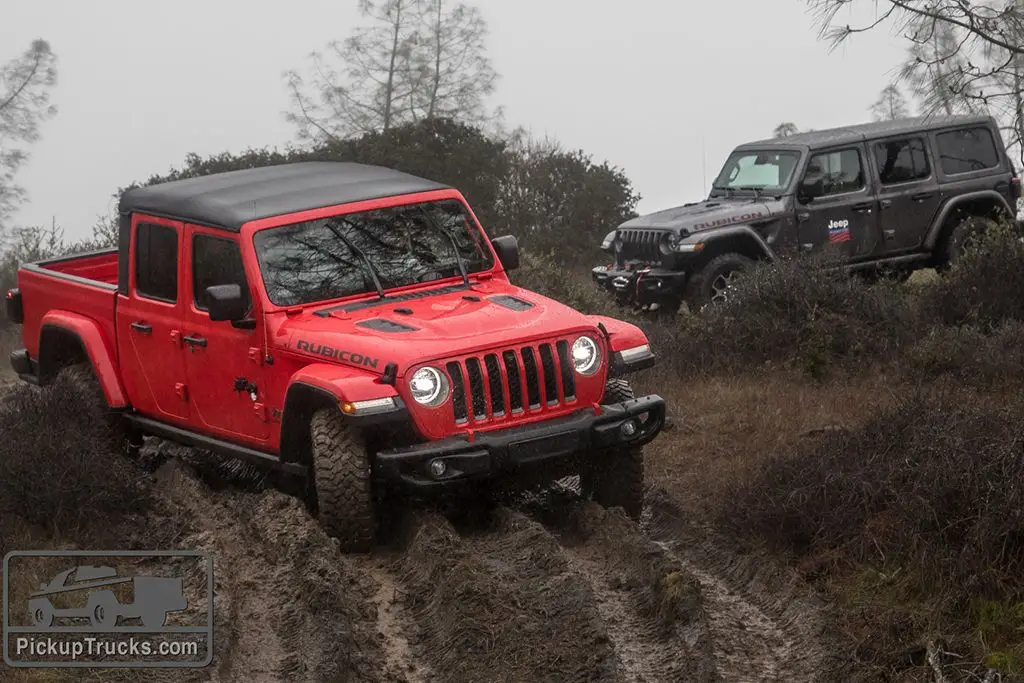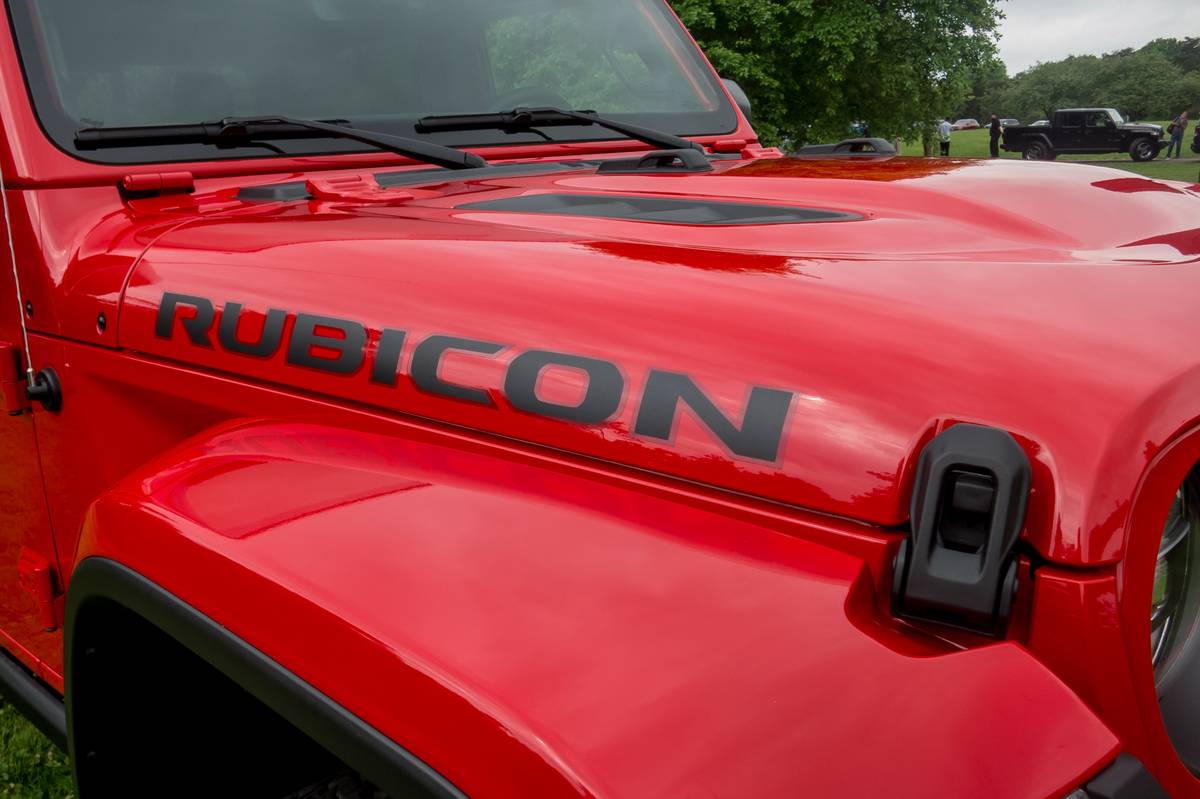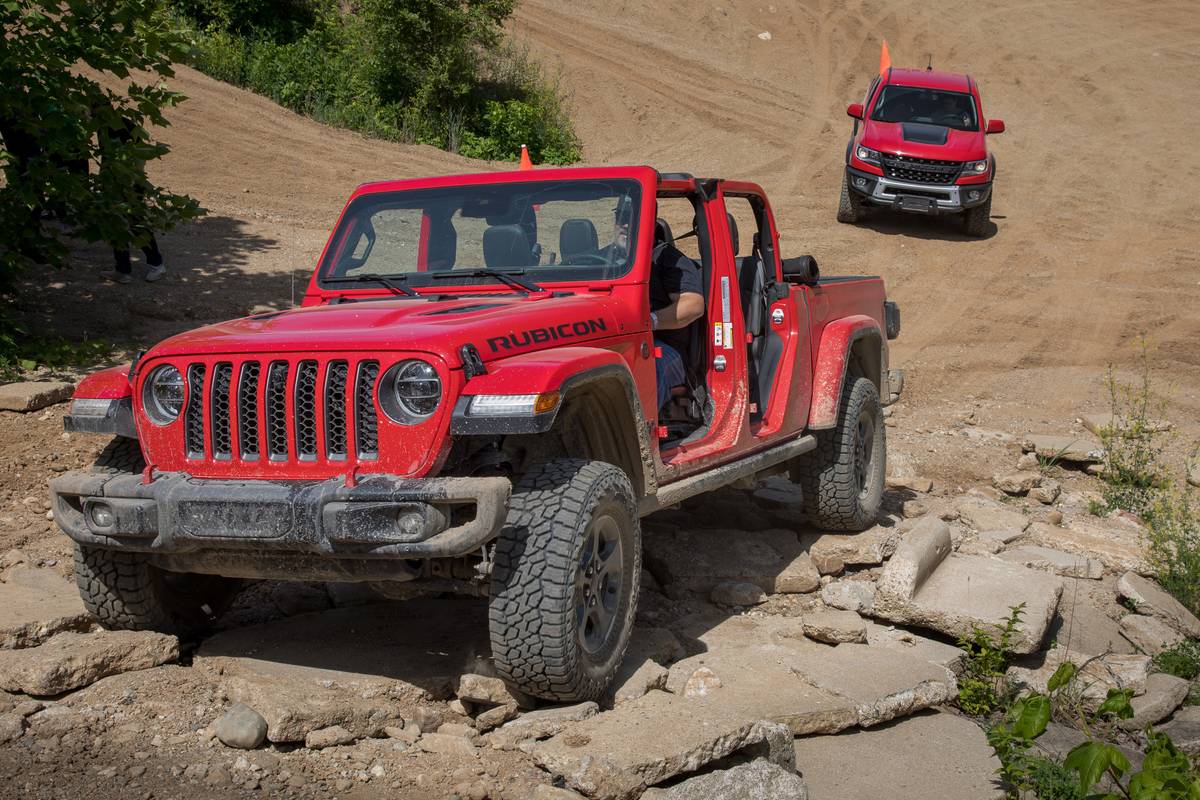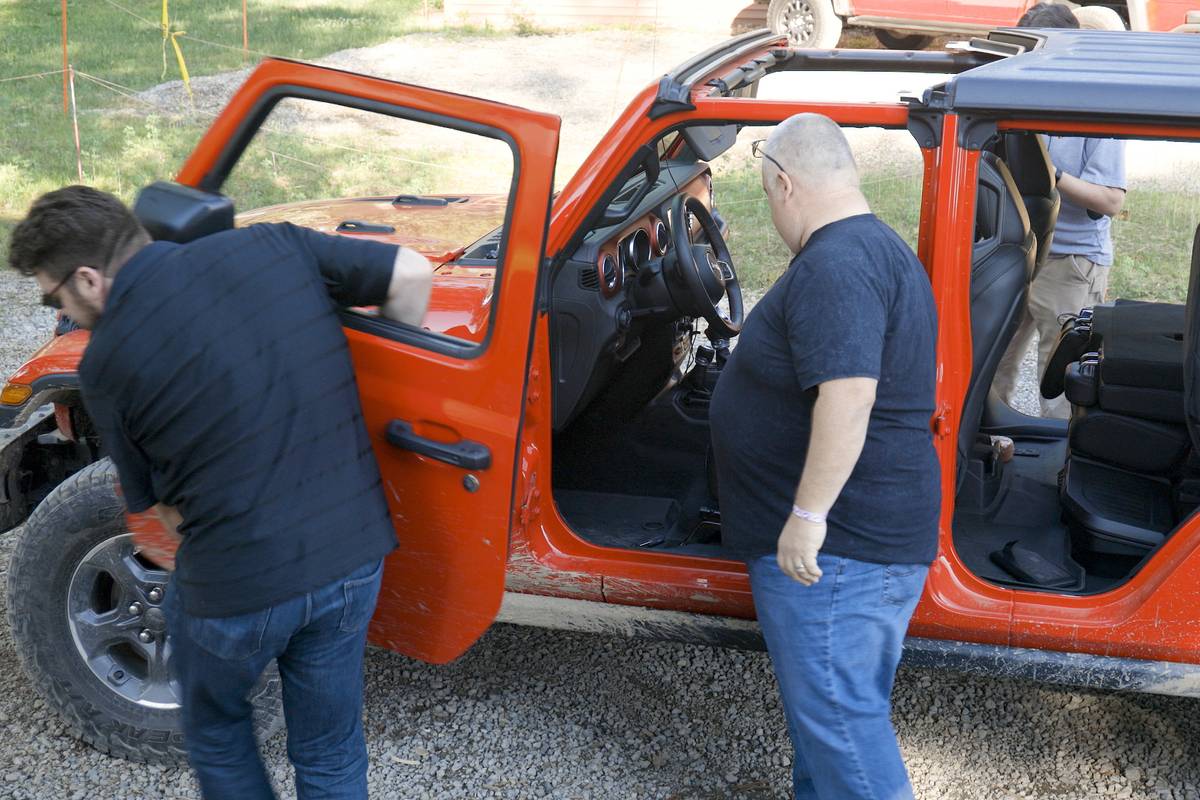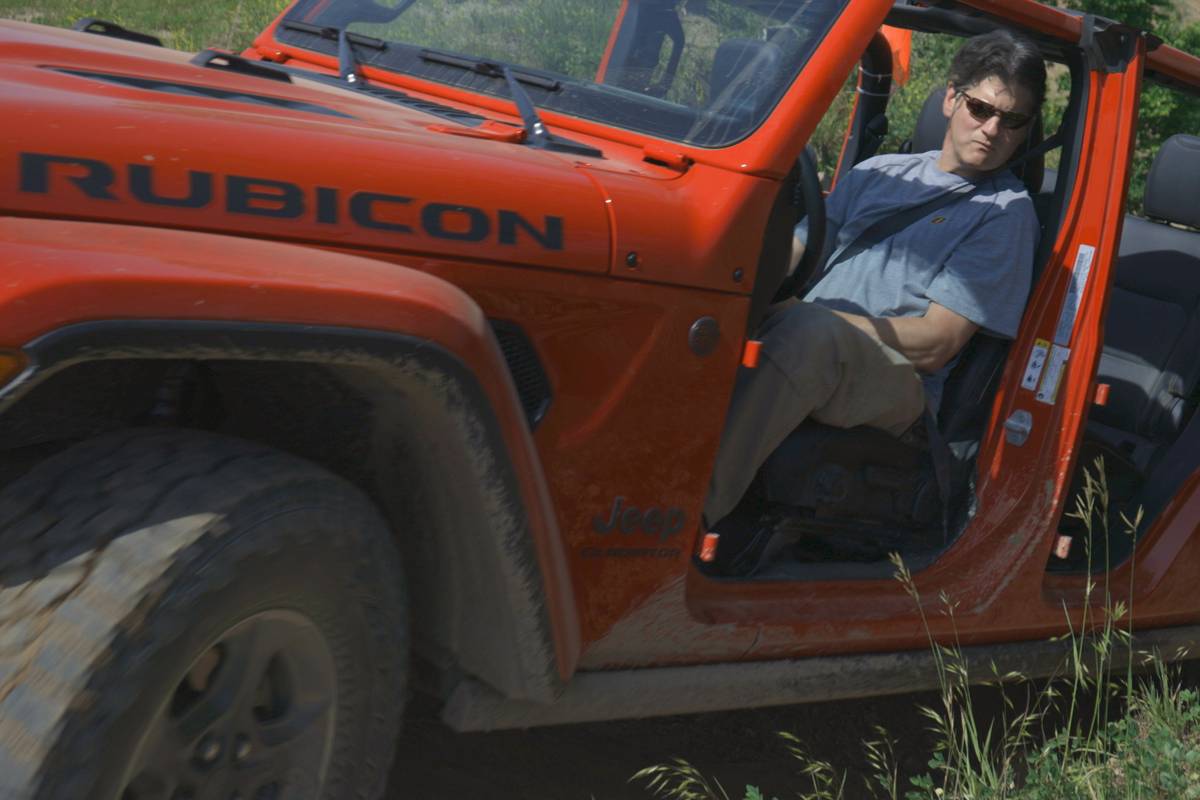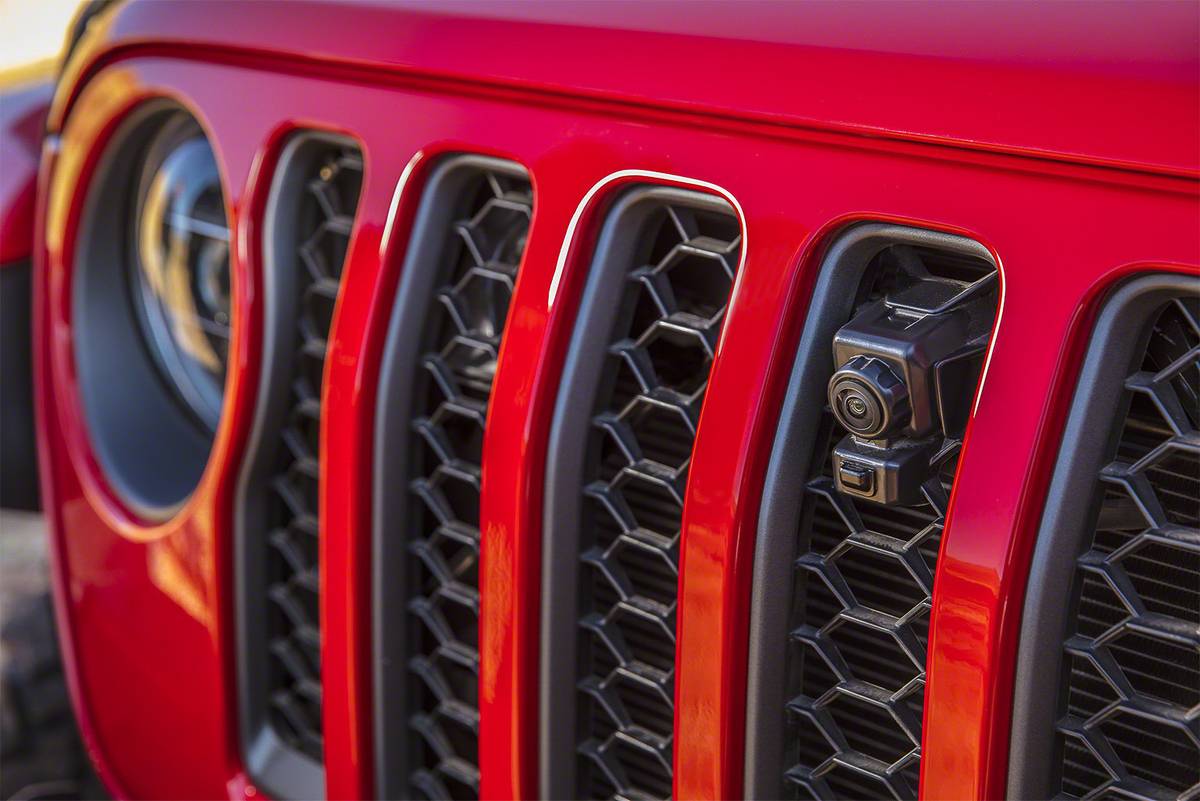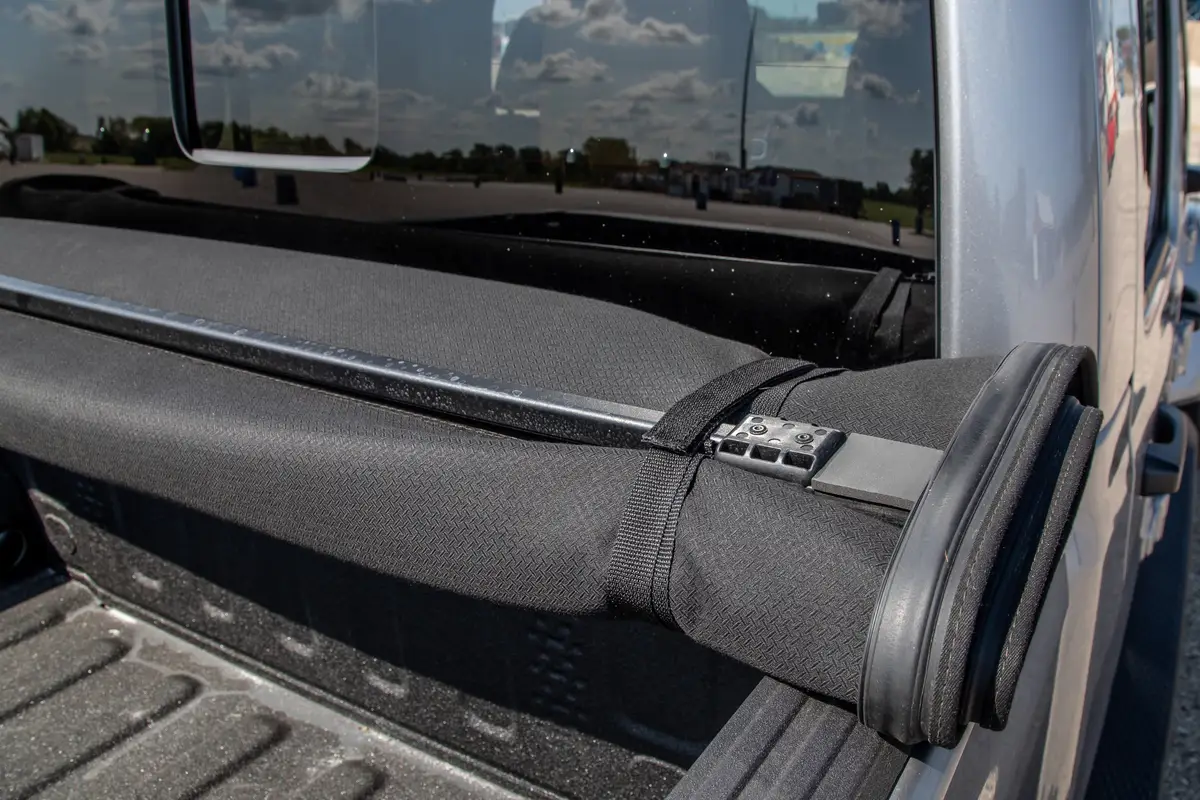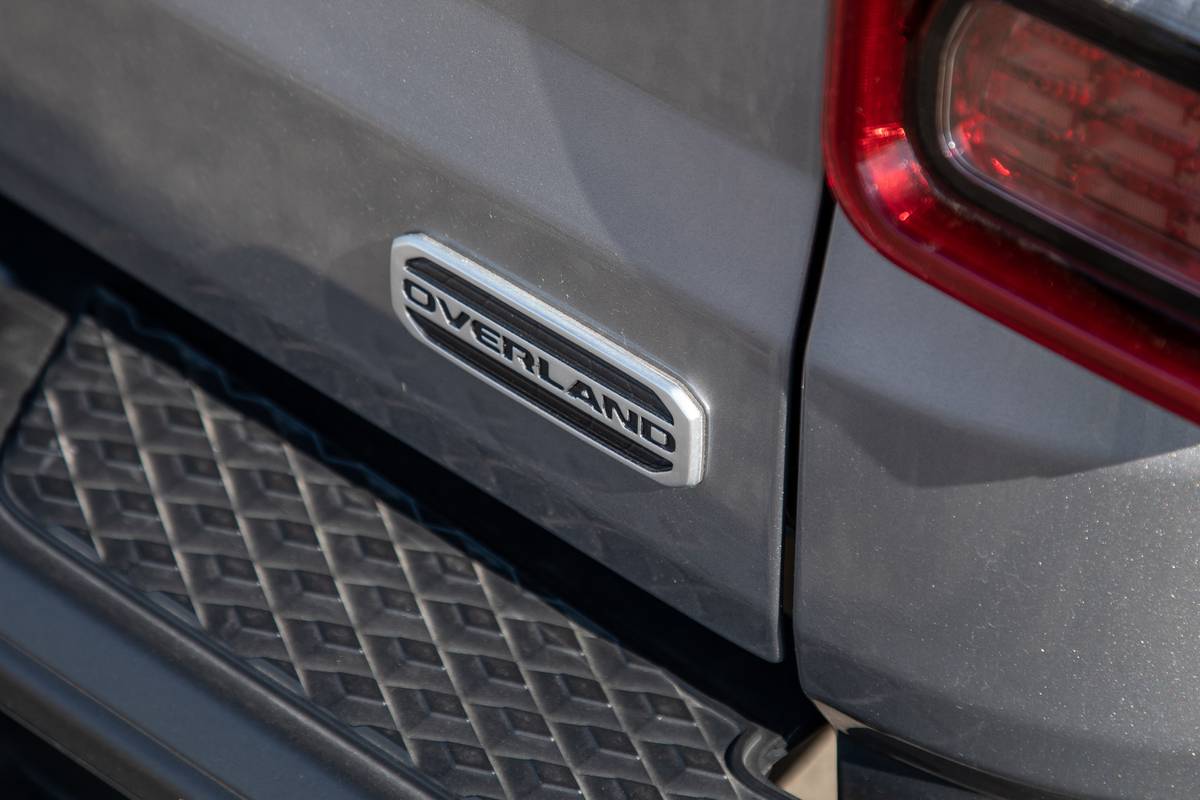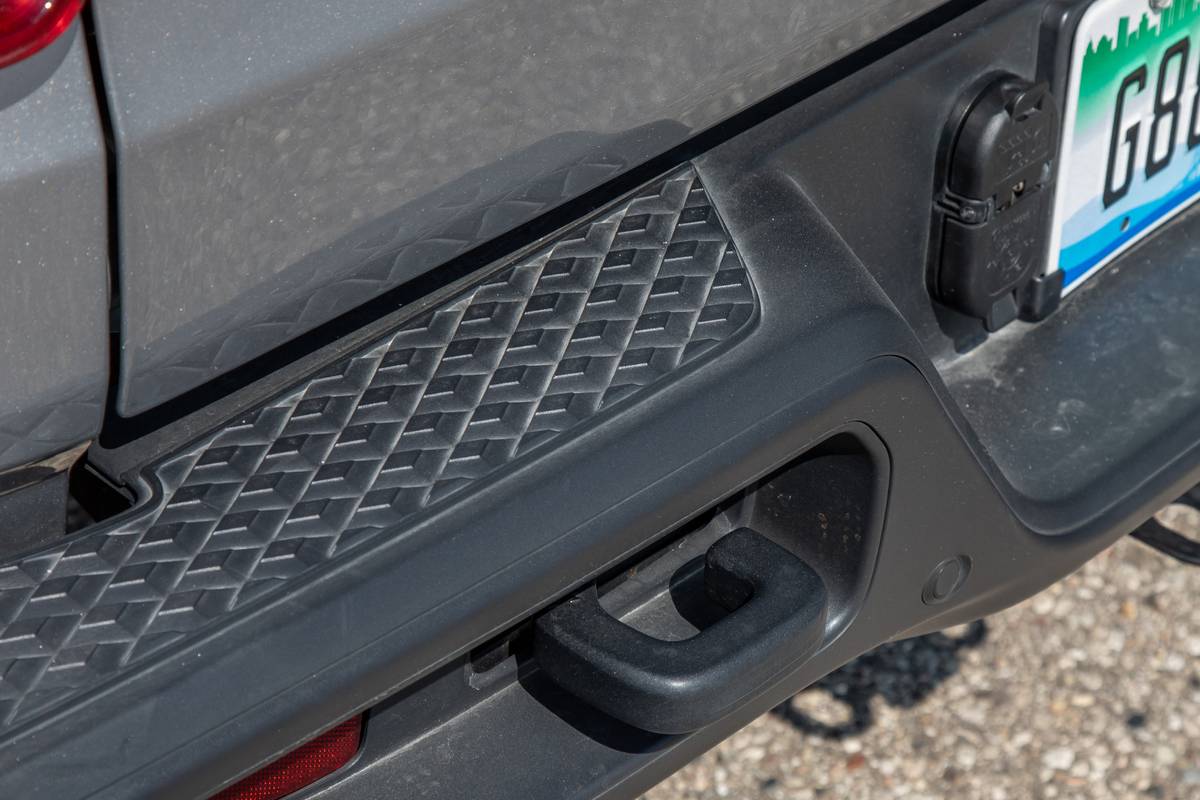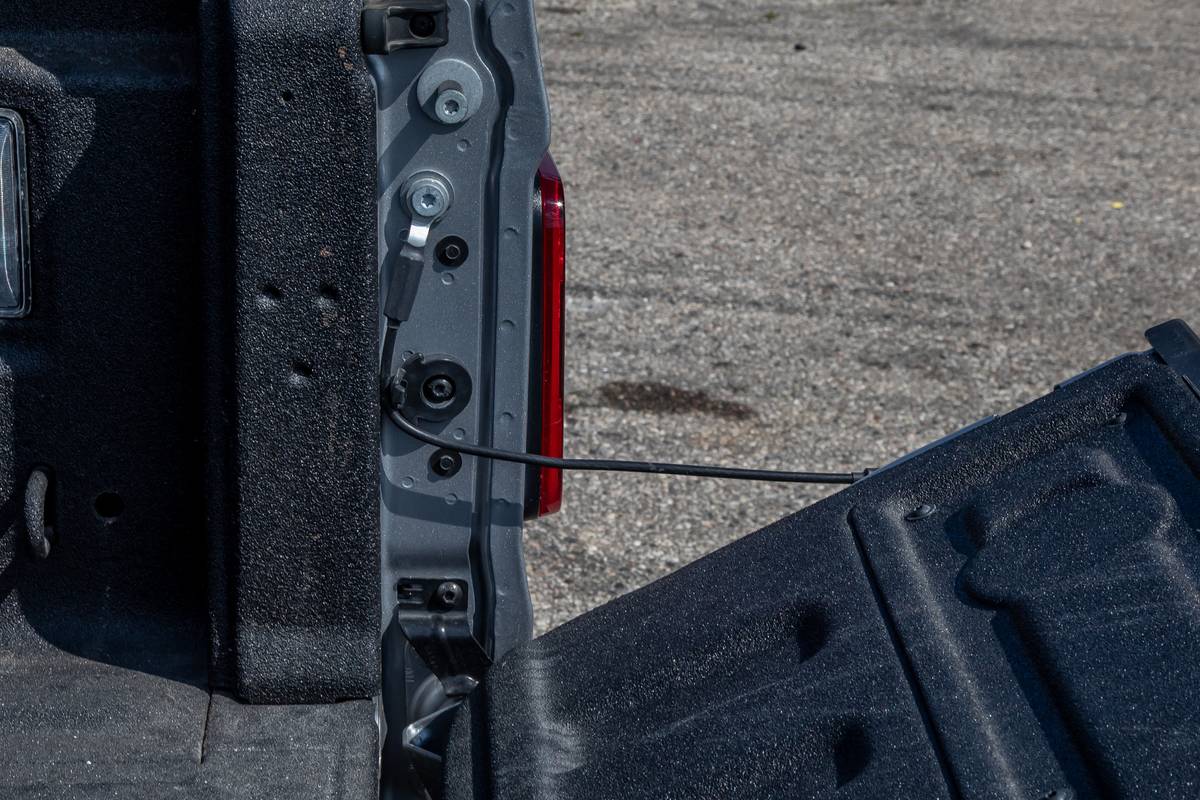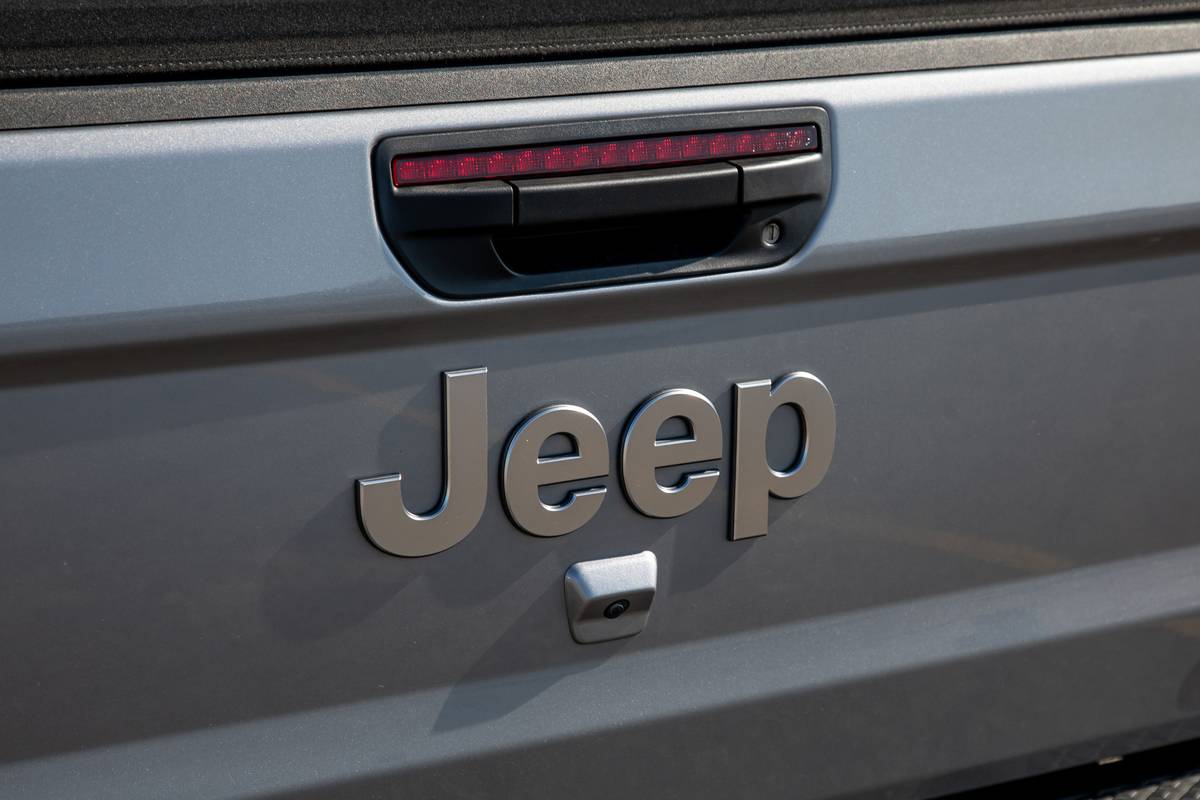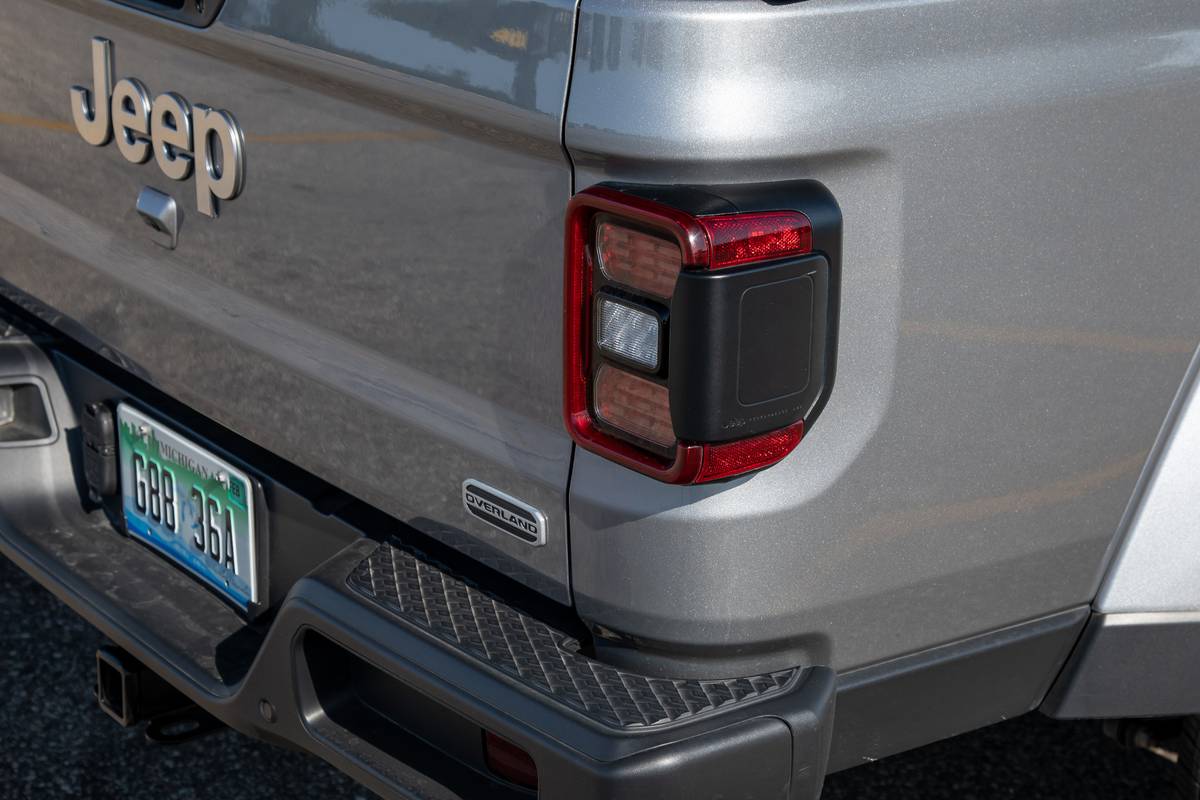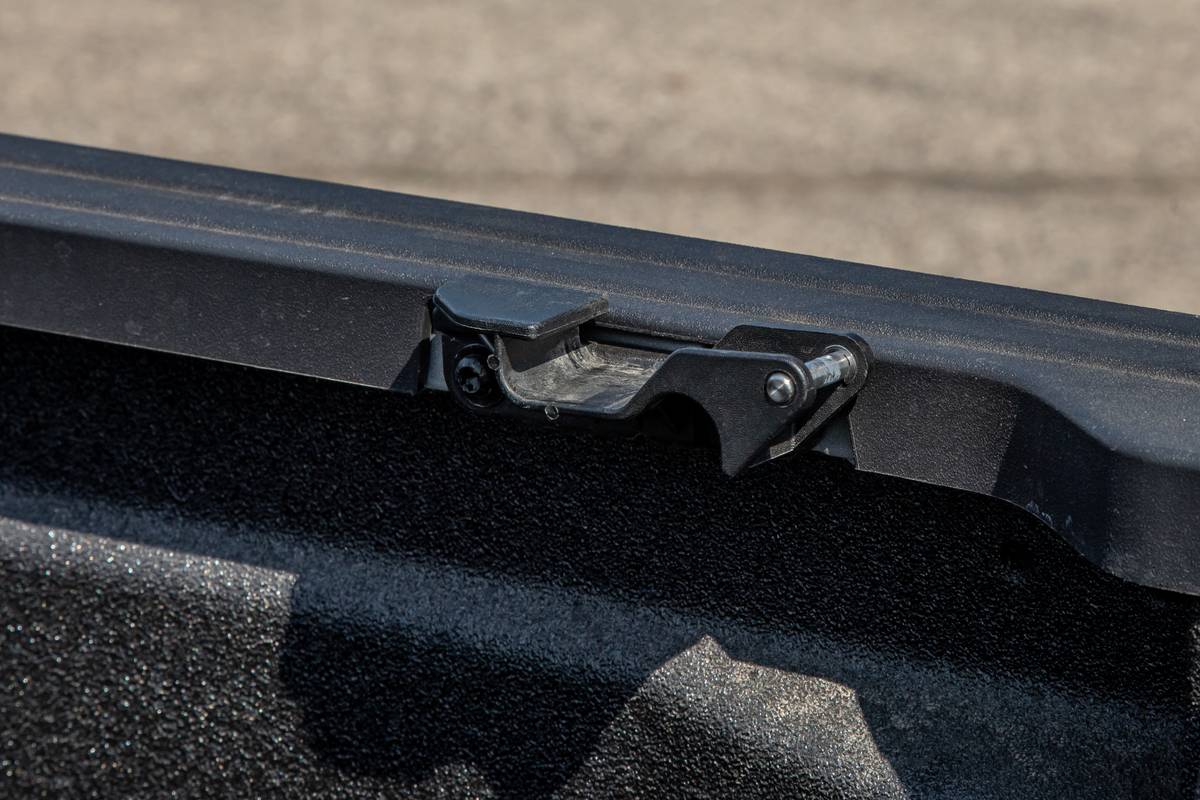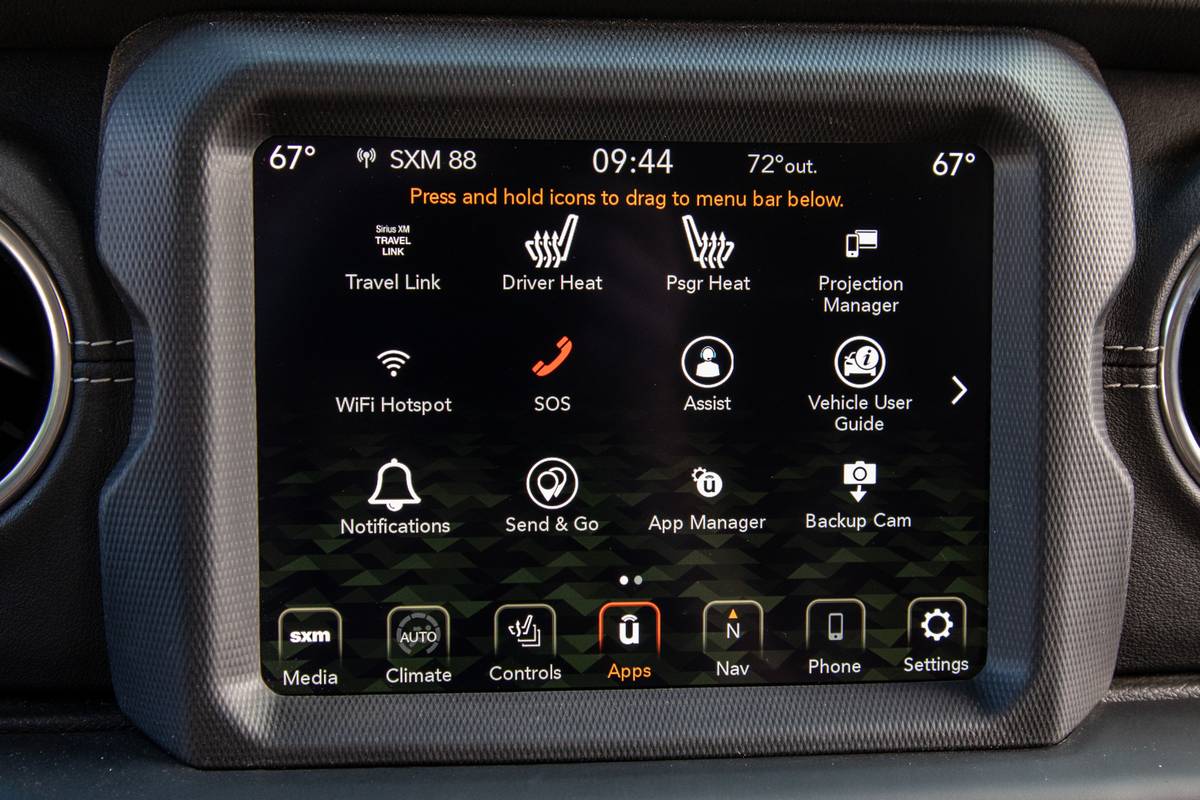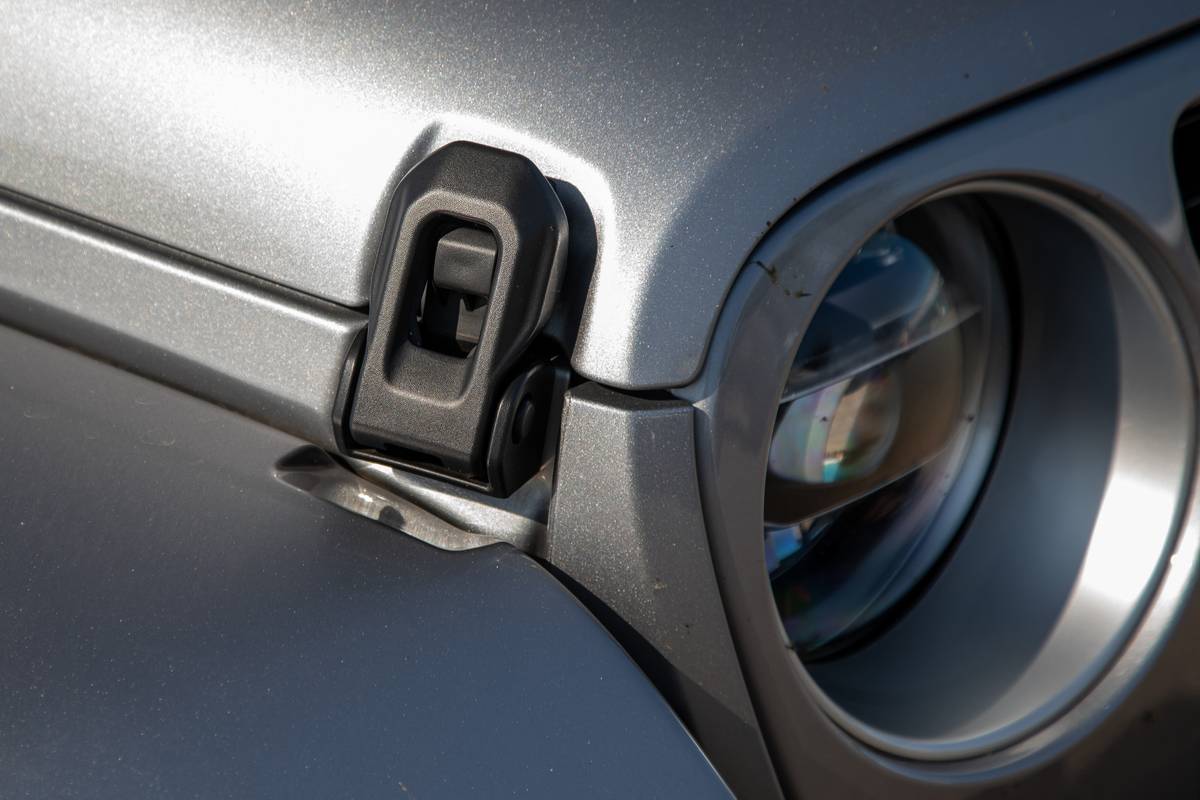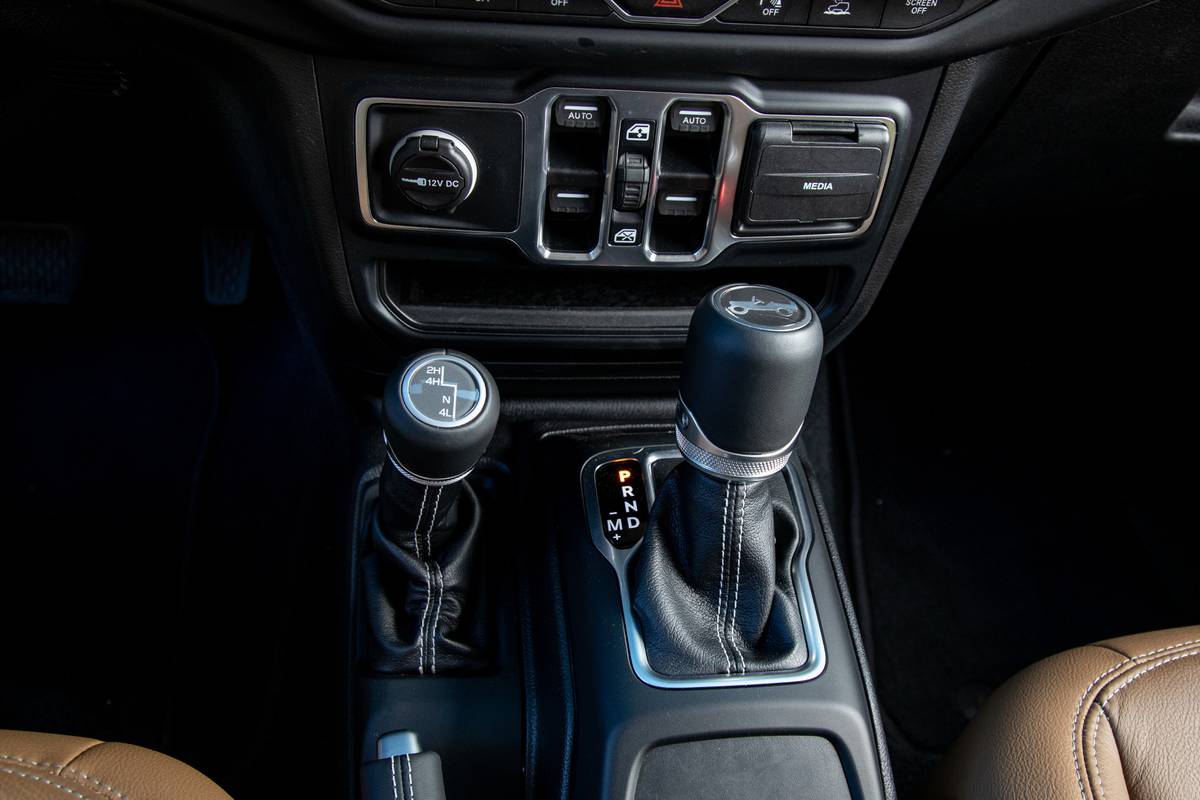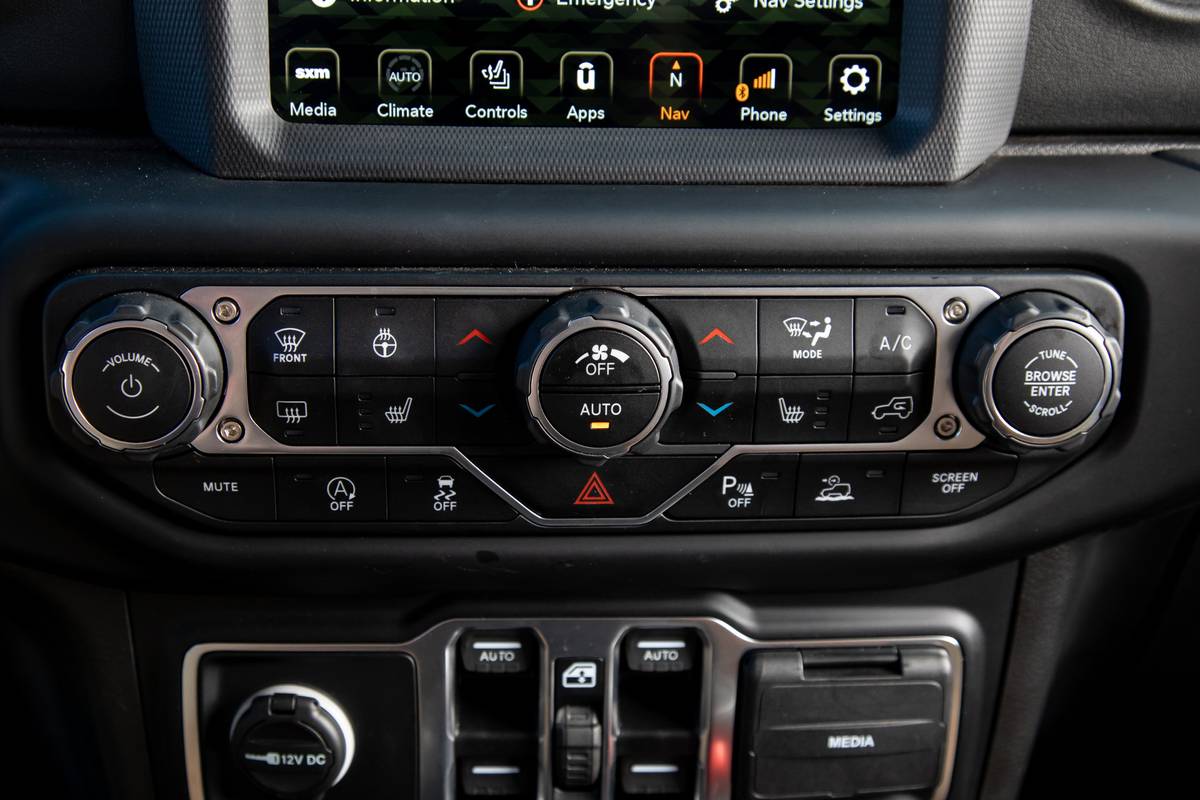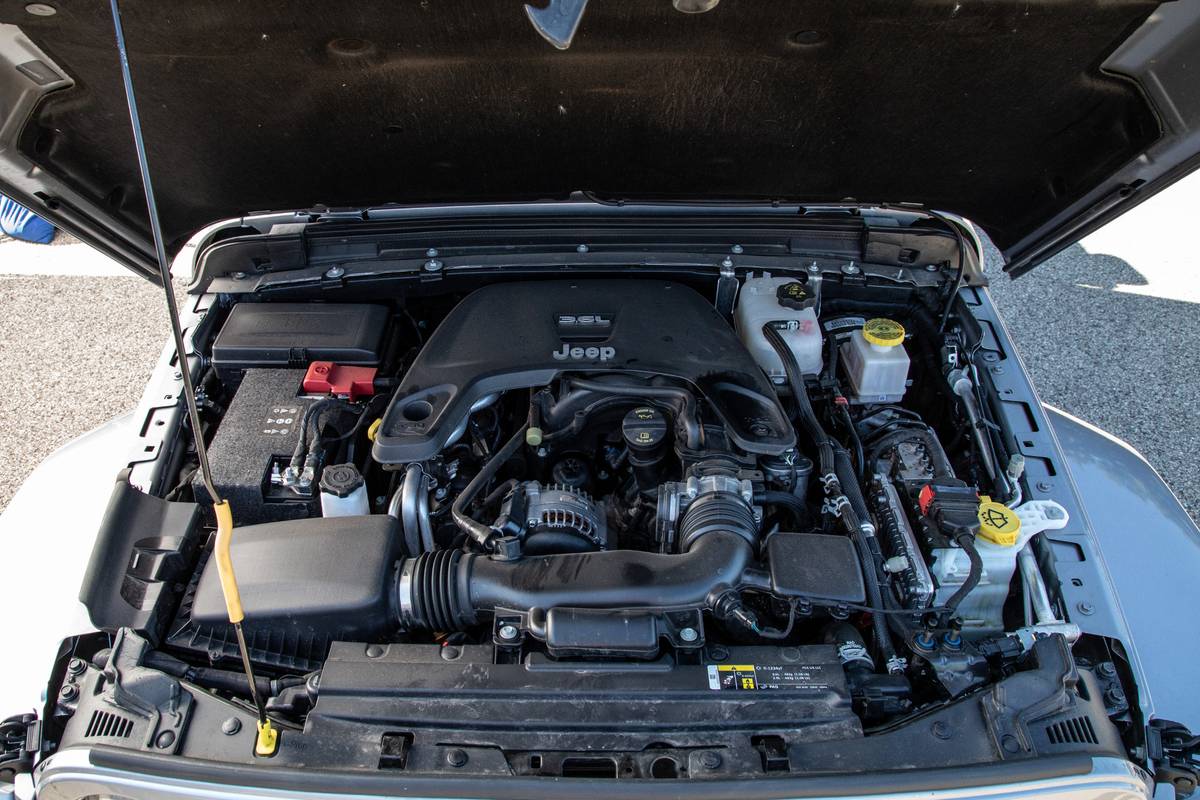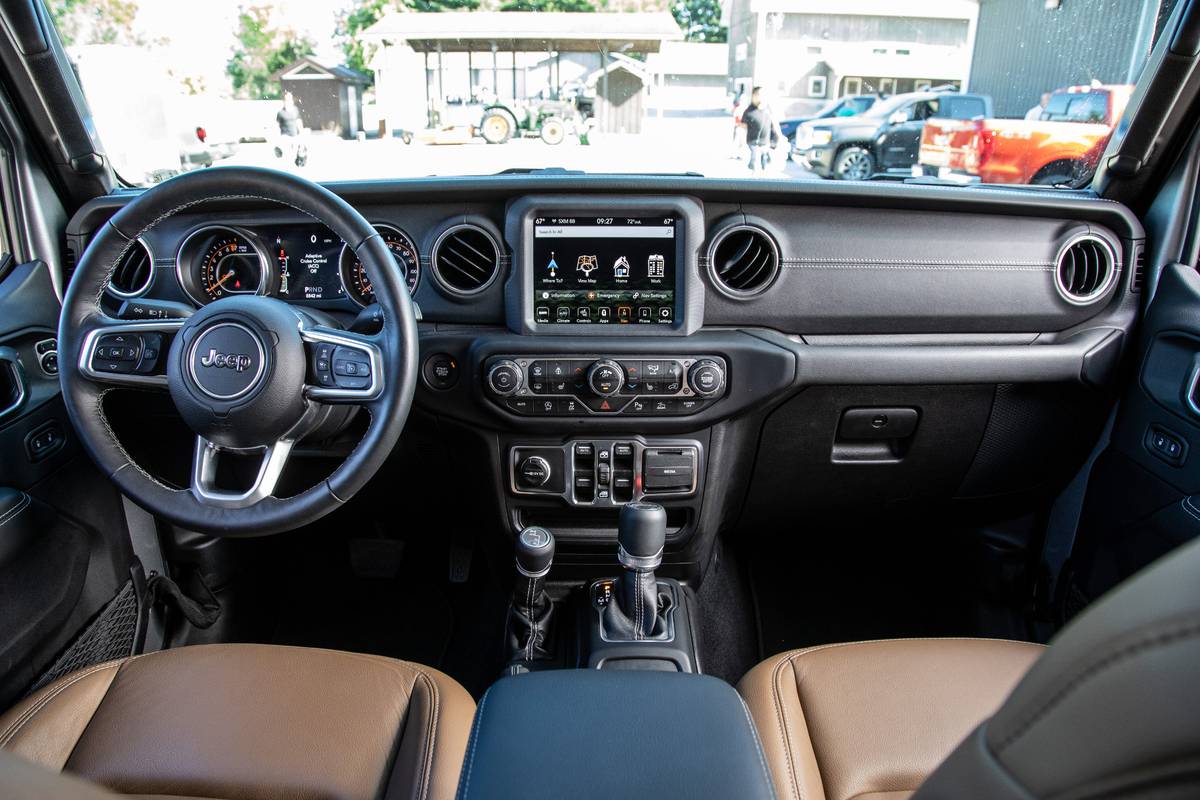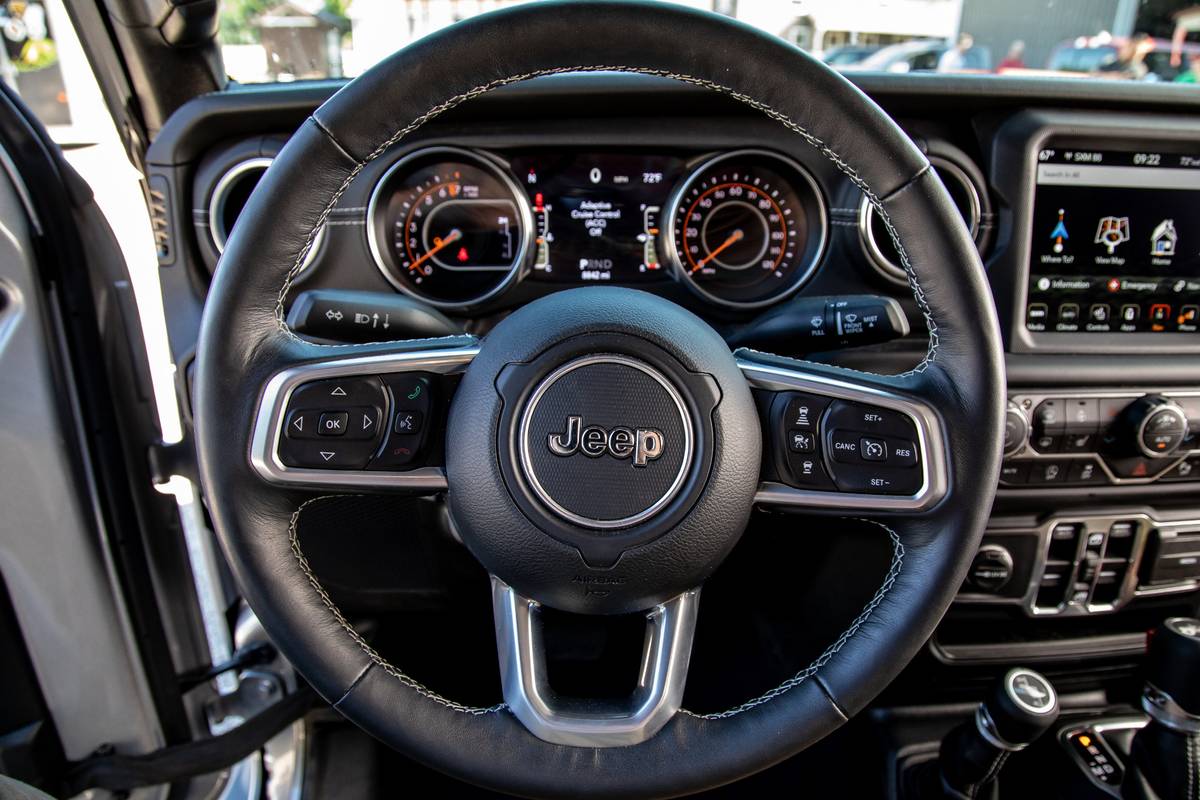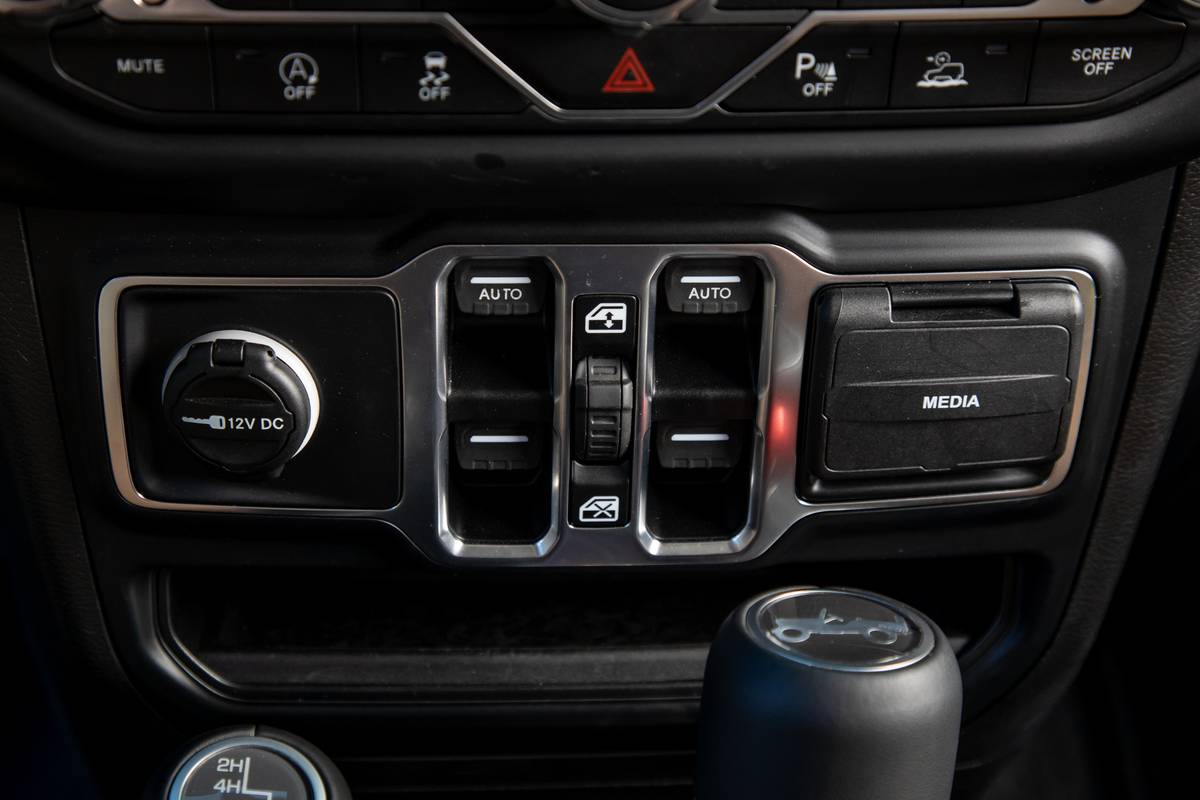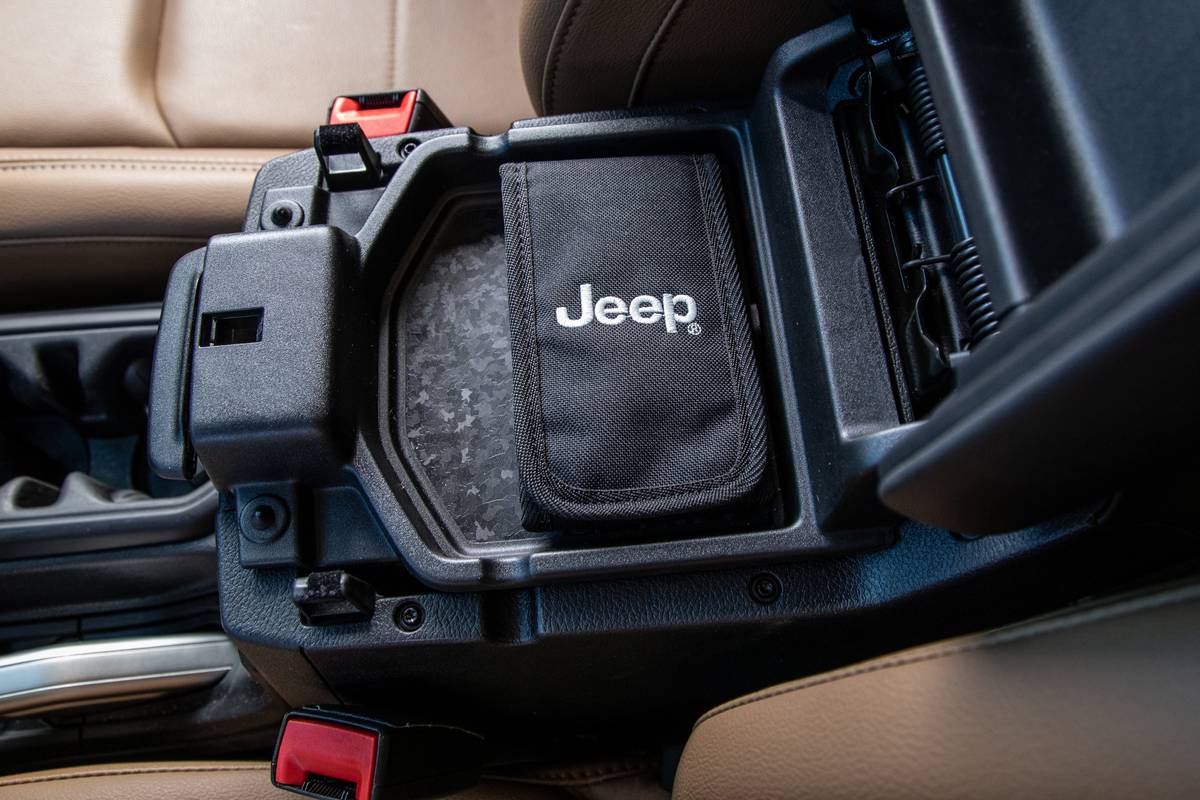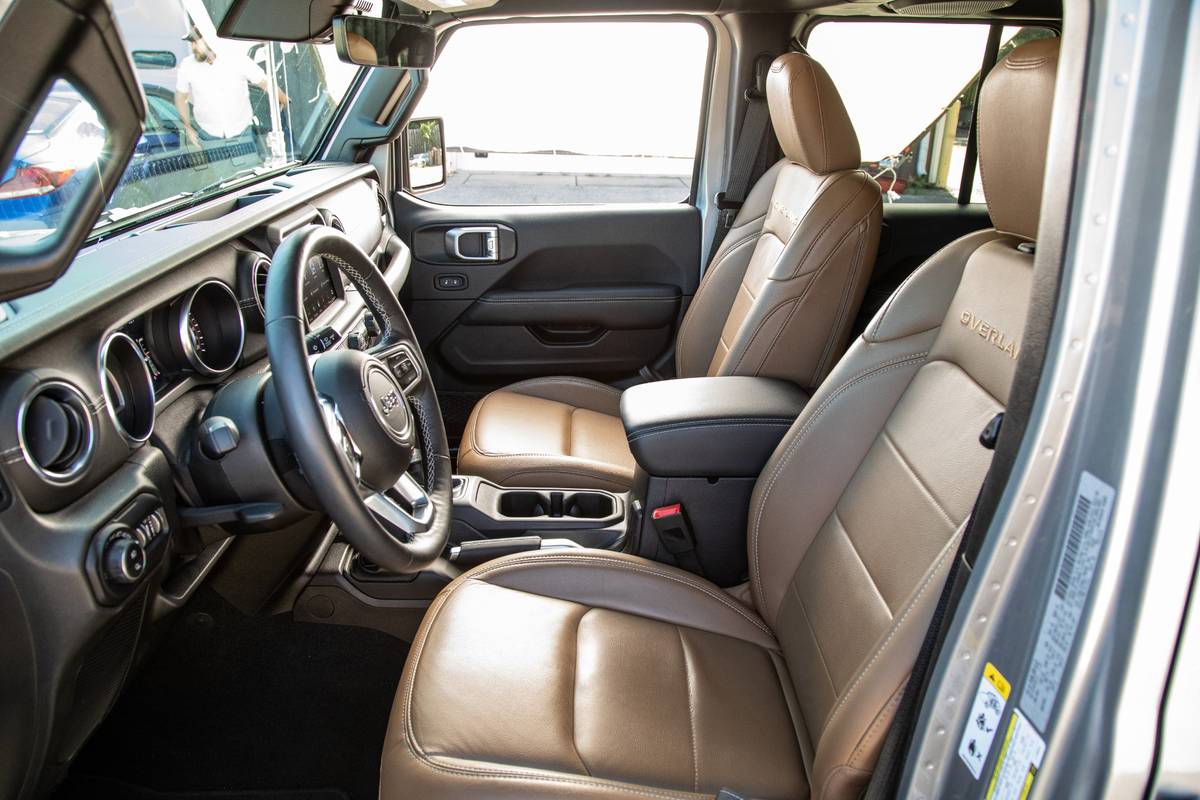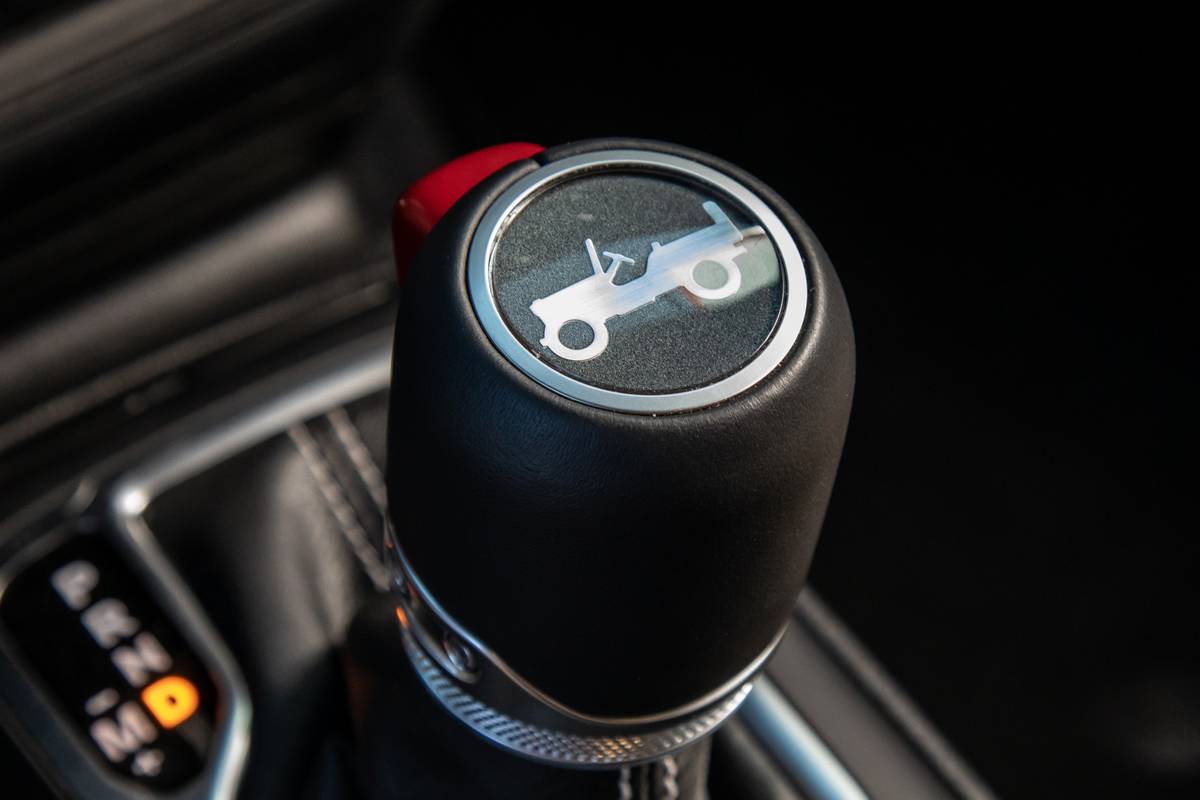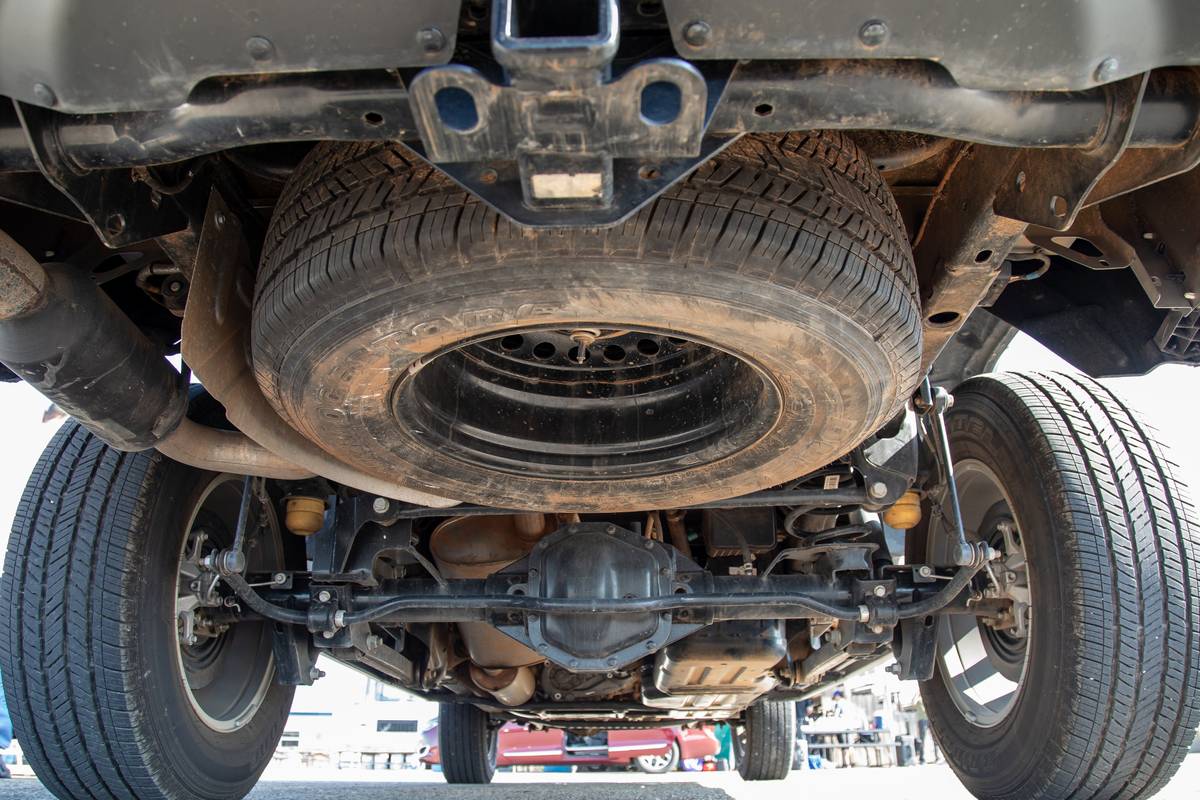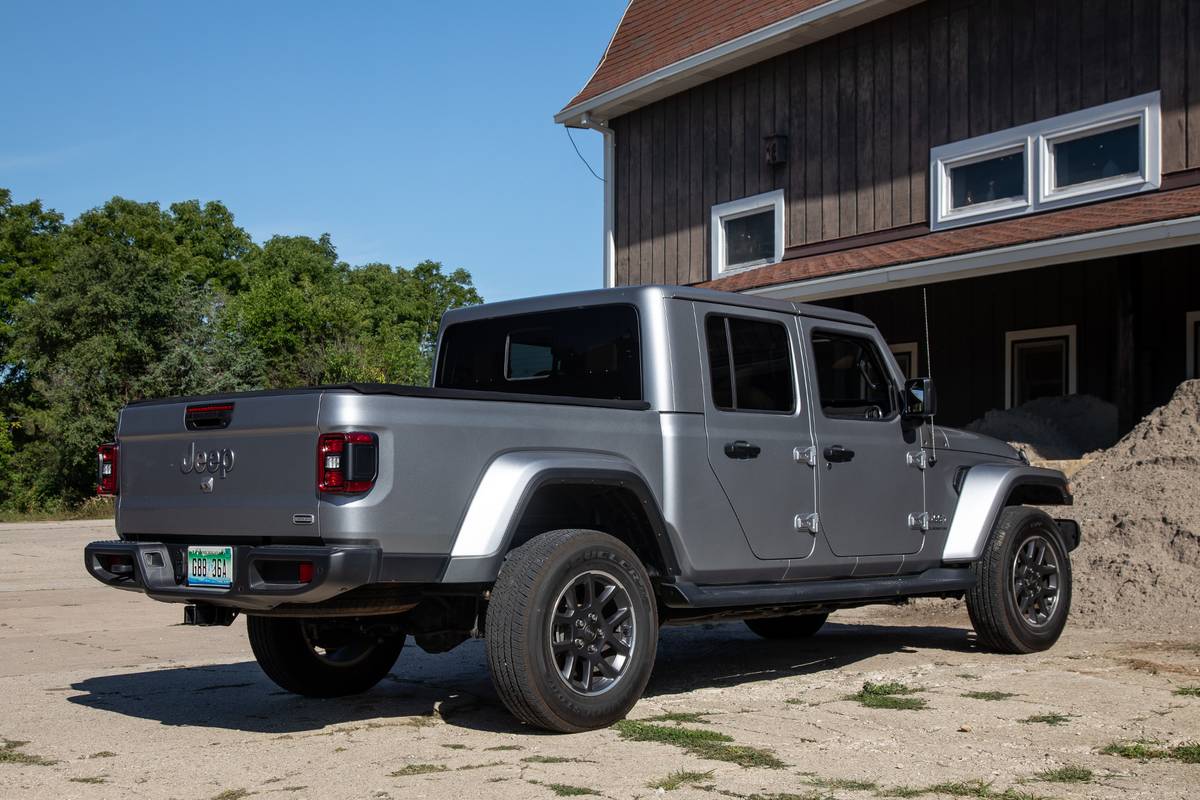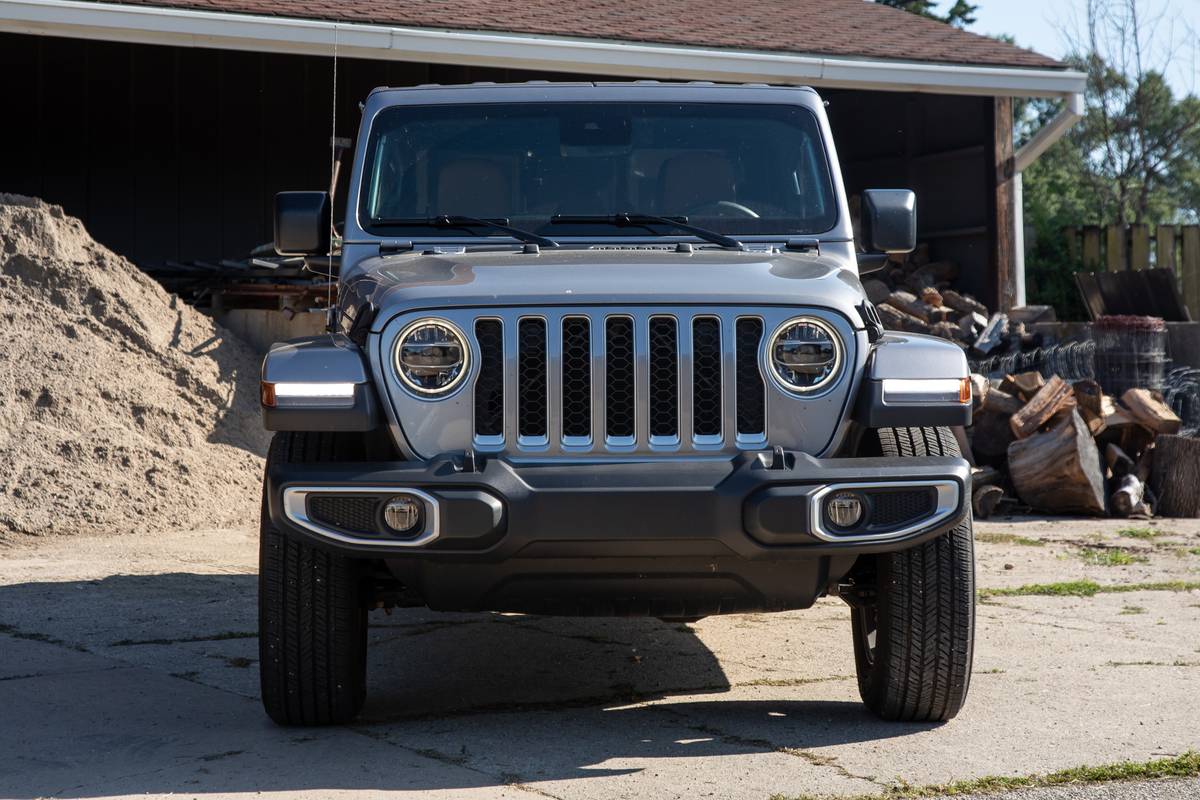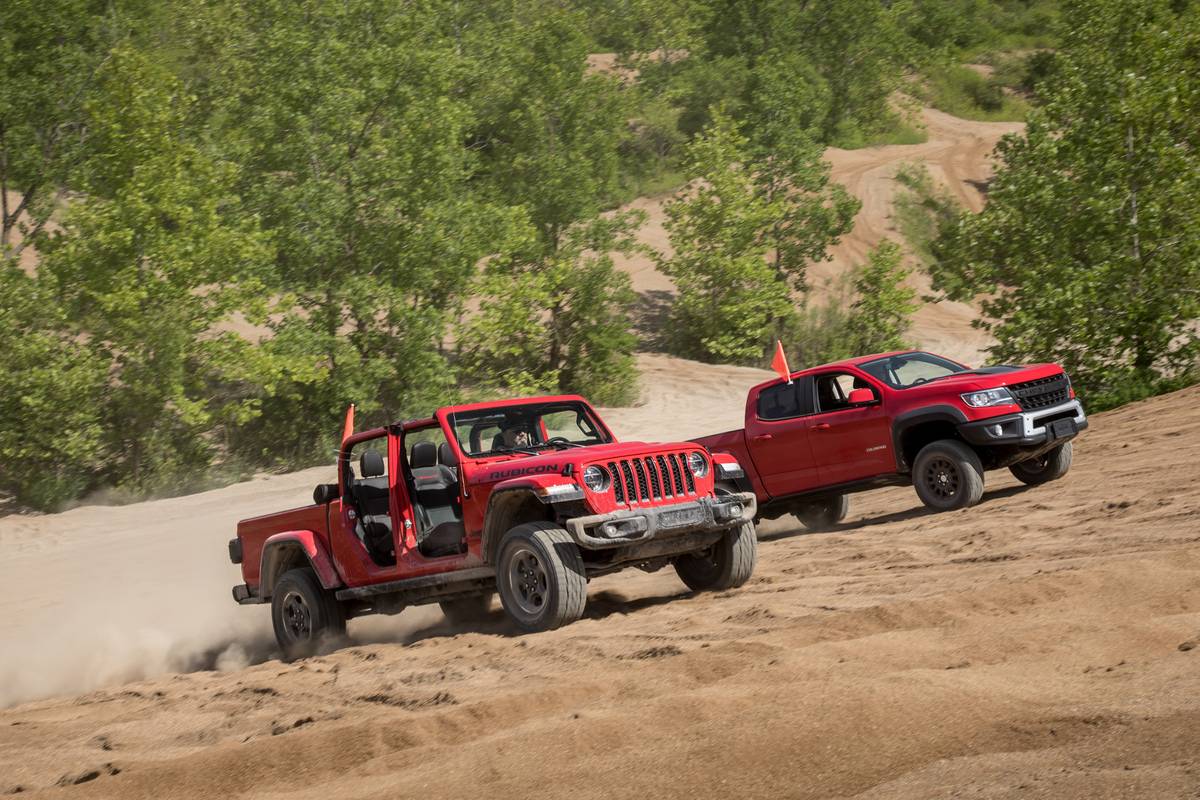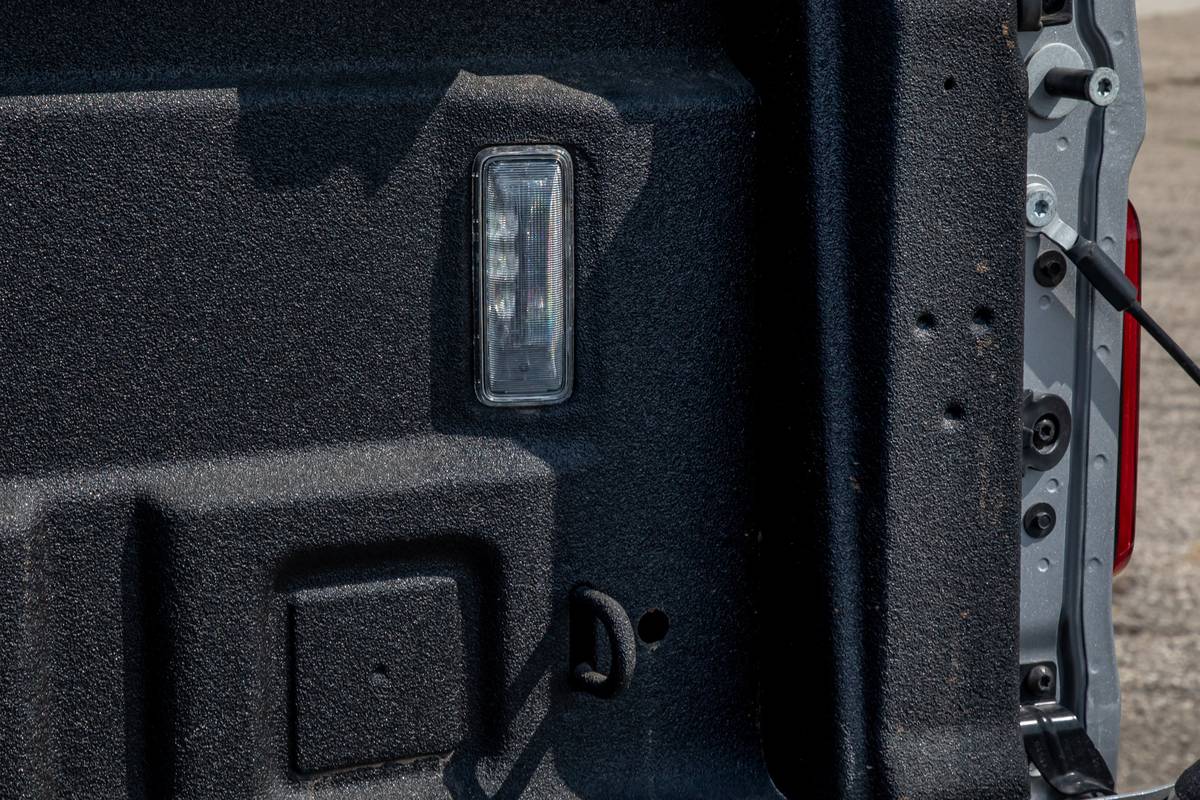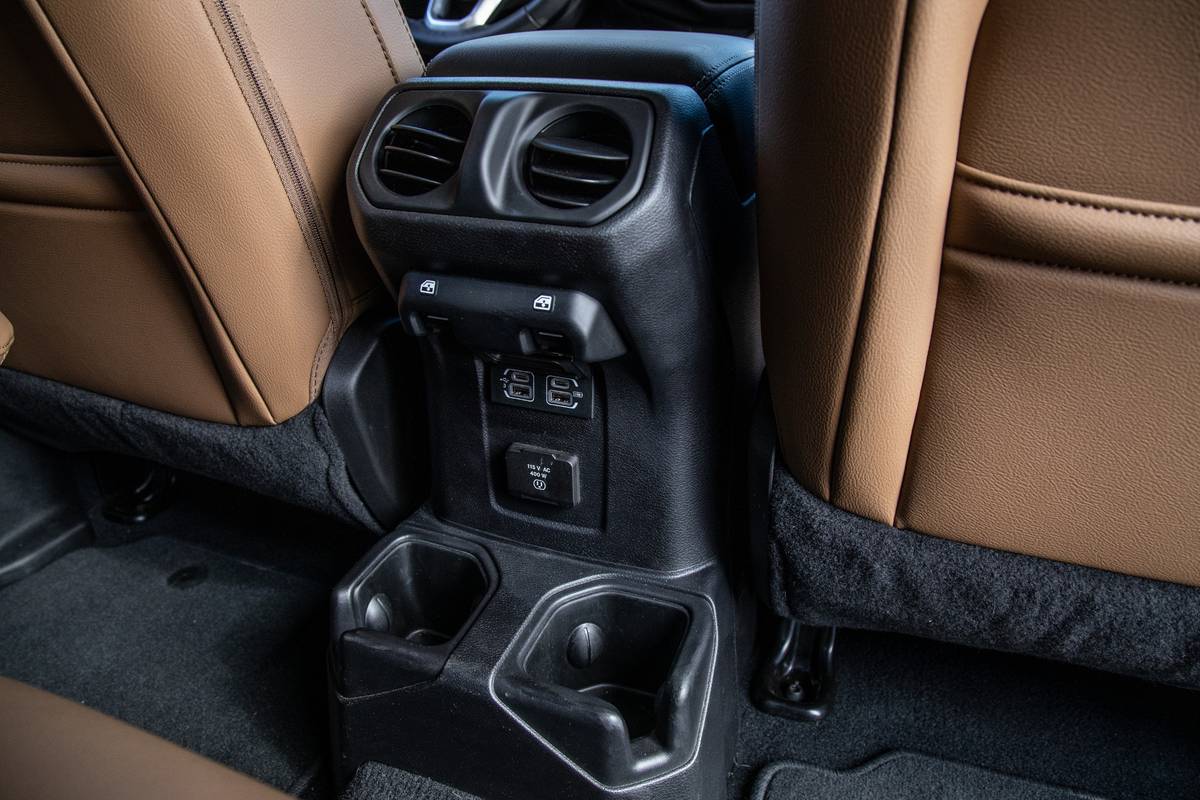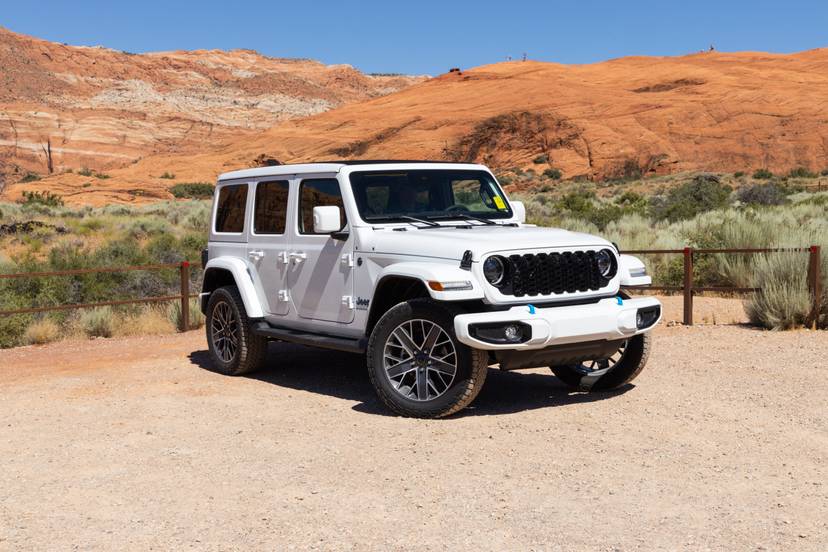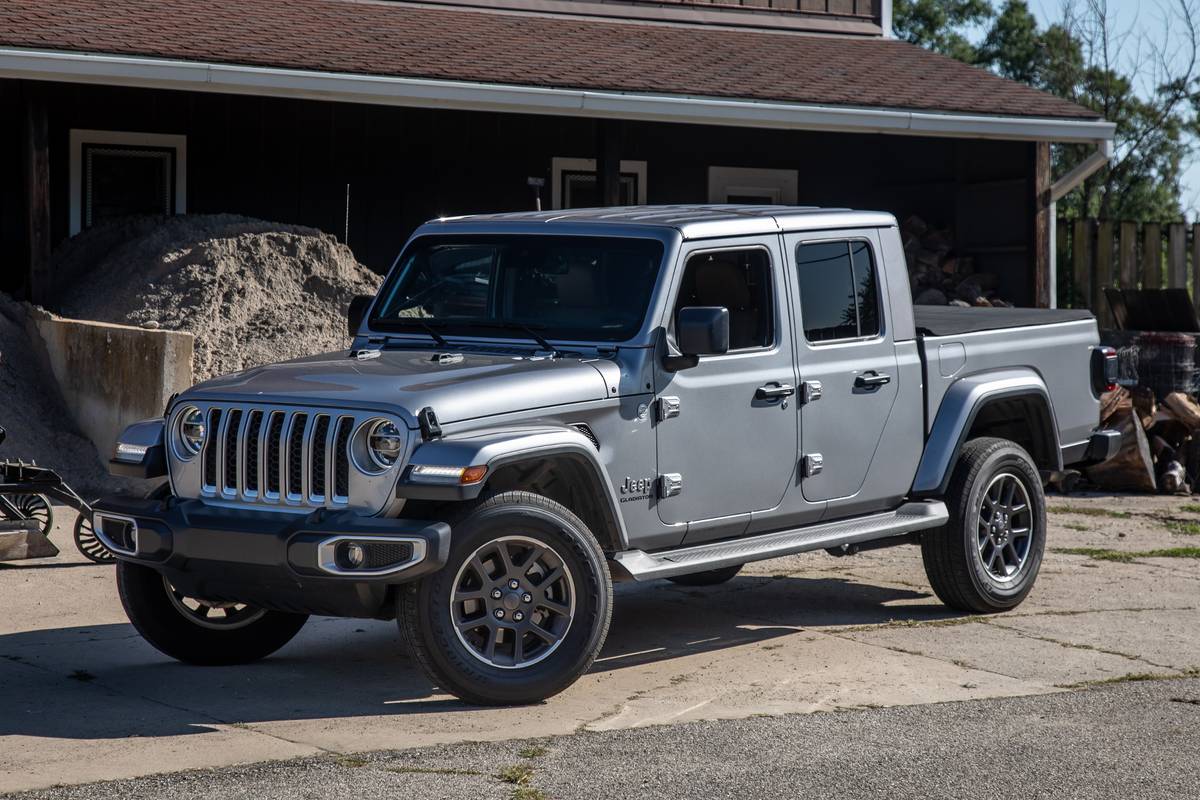
The verdict: As a Jeep that’s also a pickup truck, the Gladiator works beautifully. As a pickup alone, it’s less successful.
Versus the competition: If you need a capable mid-size pickup that goes off-road or a four-season convertible with a utility bed, the Gladiator is hard to beat — but unless you want those things, other trucks are more comfortable on-road, handle better, are quieter and are far less expensive.
The new 2020 Jeep Gladiator, the Jeep brand’s return to the pickup truck market after an absence of 27 years, might look like a Wrangler with a pickup bed, but Jeep insists that it’s so much more than that: Less than half of the parts in the Gladiator (“JT” platform) are shared with the latest Wrangler (“JL”), and we can now state that it doesn’t really drive like a Wrangler either. Given the truck’s increased capabilities over Jeep’s iconic four-wheel-drive SUV, it’s safe to say that the Gladiator is much more a pickup truck than simply a modified SUV.
Related: 2020 Pickup Truck of the Year
Don’t Worry About How It Looks
Let’s get one thing out of the way right off the bat: Yes, it looks a little odd. Theproportions are just not quite right, are they? Like the bed is a little too short, or the four-door cab is just a bit too long, or maybe the rear axle isn’t quite in the right place. From the front, back or even quarter view, this isn’t apparent. In fact, from the front, the Gladiator doesn’t look any different from the Wrangler, but it is; the grille features larger slat openings for better cooling, necessitated by the Gladiator’s higher tow rating. But when you look at the Gladiator’s profile, it’s obvious that Jeep engineers and stylists had a challenge making the Wrangler work on a pickup frame. It’s by no means a deal-killer — everybody thought that the first four-door Wrangler Unlimited looked bizarre, too, when the JK was introduced in 2006.
Regardless of how it looks, the driving experience is at once familiar and a little bit surprising. It’s longer than the Wrangler JL, thanks to a slightly stretched wheelbase that allows it to keep the Wrangler cab while still adding a 5-foot cargo bed. It’s heavier than the Wrangler, from 350 pounds on the base model to 590 pounds on the Rubicon, due to the extra structural reinforcement and beefier components required to boost the payload and tow ratings. It has a different rear suspension entirely, a five-link coil-spring setup that borrows liberally from the Ram 1500 pickup. The rear brakes are 5 percent bigger than the Wrangler’s, it has Dana 44 heavy-duty axles front and rear like the Wrangler Rubicon (every other Wrangler trim has a Dana 30 front axle), and the wheels are chunkier to support the Gladiator’s higher weight rating.
On-Road Adequacy
All of this adds up to two notable sensations — first, this is the best-riding Wrangler-derived vehicle ever made. No Wrangler rides this smoothly, with this level of bump-absorbing skill. Rough pavement, no problem. Rocky field, won’t be bothered. Smooth interstates, feels like a Lexus. The long wheelbase and the heavier-duty suspension smooth out just about everything without the bouncy feel that plagues the Ford Ranger FX4 or Chevrolet Colorado Z71. Of course, this on-road evaluation was made in the Overland trim, the most luxurious and on-road-friendly version of the Gladiator, with large, pavement-oriented tires that still performed beautifully in the deep, slippery, muddy two-track ruts along our drive route. Do it in a Rubicon trim Gladiator and it’s less enjoyable, but not much less.
The second main sensation is one of heft. The Gladiator is longer and heavier than the Wrangler, which — combined with the solid front axle — translates into a big, high-riding truck that isn’t all that thrilled being pushed quickly on tight, twisty mountain roads. The steering feel is exactly like that of a Wrangler JL — light on effort, but light on feedback. It’s largely isolated and fairly numb, which is exactly what you want on an off-roader that might throw some violent steering wheel motions back at you if you put a wheel wrong and hit a rock or rut, but which isn’t all that pleasant when you’re trying to hustle the Gladiator along a winding valley two-lane road. This is one of the main reasons that it didn’t place higher in our comparison of the Gladiator Overland versus other on-road-oriented mid-size pickups. That floaty handling is something you accept in a Jeep Wrangler, but it’s less acceptable in a pickup, regardless of the brand badge.
The acceleration from the 285-horsepower, 3.6-liter Pentastar V-6 is adequate, but not what one would classify as rapid. It is outgunned considerably by the turbocharged 2.3-liter four-cylinder and 10-speed automatic that are standard in the newest Ford Ranger, which is lighter, torquier and much more responsive than the Gladiator’s powertrain. The Gladiator comes standard with a six-speed manual transmission that’s smooth, direct and has excellent shift quality, but you’ll be shifting it a lot to keep the truck in the engine’s powerband — better you should opt for the excellent eight-speed automatic transmission and leave the shifting to Jeep.
If you want the maximum towing ability, you’ll need the eight-speed and the Sport S trim level. It has a maximum tow rating of 7,650 pounds when properly equipped. I towed a 24-foot, 6,000-pound Airstream camper trailer for a few miles and aside from a noticeable squat to the Gladiator’s ride, it was able to accomplish this task well enough. A trailer this large does tend to push the truck around in windy conditions, and the floaty steering and smallish side mirrors don’t do much to engender confidence. The 3.6-liter V-6 also has to work harder than I’ve ever heard one work, routinely holding lower gears and revving into the 4,000-6,000 rpm range and keeping it there on long uphill stretches. Strangely, there’s no Tow/Haul mode for the automatic transmission, an odd omission on a vehicle that specifically bills itself as built for towing.
Stick to more sedate cruising in the Gladiator, and you’ll be a lot happier. The standard high-quality soft top comes down easily, with a removable rear window, two snap-off quarter panels and a quick unlatch and toss back of the folding top. Just like the latest Wrangler, there are no zippers, only tongue-and-groove channels. It looks a little odd with the top retracted, since the Jeep designers’ goal was to keep the top from intruding on the bed space. Instead, it stops at the very back of the cab, above the rear window opening, looking like some kind of tall spoiler. Two composite hard tops are available, one in black and one in body color, each removable in three pieces like a Wrangler Freedom Top. And just like the Wrangler, the doors come off and the windshield folds down. Take everything off, turn it into the world’s only naked convertible pickup, and go blast across the desert scrub — and all of the Gladiator’s on-road ills evaporate in a cloud of dust (that quickly envelops you and trashes the interior).
The Off-Road Mastery
All of the Gladiator’s porkiness disappears as soon as the pavement does. Off-road, the Gladiator displays the same absolute domination of the environment that the Wrangler does, with systems, technology and designs that help it conquer whatever challenge you throw it into. We’ve driven the Gladiator off-road a number of times, both on media launch drives and our own head-to-head competition versus the 2019 Chevrolet Colorado ZR2 Bison. We have driven through some seriously deep mud pits, made dramatic ascents and descents of slippery, jagged rock piles, blasted through loose pea gravel, sailed over high-speed whoop-de-dos, crawled over steep rock tables that we scraped the chassis on and traversed some terrain that you would have extreme difficulty even walking over. Despite its added length over the Wrangler, the Gladiator handled it all with ease, thanks to a multitude of systems designed to help you get wherever you need to go. Suffice it to say that it does virtually everything a Wrangler can do off-road, which is more than any other off-road mid-size pickup truck can do, according to our testing.
The top-spec Gladiator is the Rubicon trim, just like on the Wrangler, and it features all of the bells and whistles that make Jeeps unparalleled in their off-road ability. Front and rear electronic locking differentials, electronic sway-bar disconnects, a super-low crawl ratio for the transfer case, an extra inch of suspension lift versus lesser Sport, Sport S and Overland trims, and something new and currently exclusive to Gladiator: Off-Road Mode Plus. If you engage this button while in 4-High, it will assume you’re driving through sand, and adjust the throttle and stability control settings accordingly; if you engage it while in 4-Low, it assumes you’re traversing rocky, low-speed terrain and adjusts the systems for that. We wouldn’t be surprised to see this feature eventually make its way over to the Wrangler, too — it’s just software and a button, so no reason it shouldn’t.
All About That Bed
But if all you cared about was cruising around without doors and climbing mountain trails, you’d be buying a Wrangler. The reason for the Gladiator is that 5-foot, all-steel pickup bed. It may not be as long as the extended beds on the Chevrolet Colorado/GMC Canyon or Ford Ranger, but it’s meant more for lifestyle buyers than work truck owners, and for them Jeep has designed the bed quite well.
The tailgate, for instance, has two open positions: fully open, and tilted out slightly thanks to some clever cable stays. When in the slightly open position, one can slip several sheets of the proverbial 4-by-8-foot plywood sheets into the bed, resting atop the wheel wells where the box is wider. A spray-in bedliner is optional and there are several tie-down points, an available rack system and myriad Mopar accessory parts meant for securing anything from bikes or motorcycles to kayaks or surfboards in back. A soft tonneau cover can be had that locks with the liftgate but can be opened partially to allow carrying of long planks of wood. The Gladiator is expensive enough that you’re not going to see these outfitted as cheap tradesman work trucks; they’re going to be snapped up by lifestyle buyers who use them as toy haulers and go-anywhere fun buggies, and for those buyers, the bed’s size is likely to be perfectly adequate.
As Expected, It’s Not Cheap
Which brings us to one of the most frequently asked questions about the new Gladiator: How much will it cost? The sticker price starts at $35,040 for a basic 2020 Gladiator Sport trim; all prices include a whopping $1,495 destination fee. Why Jeep requires $500 more to ship a Gladiator from Toledo than Mercedes-Benz asks to ship a G-Wagen from Austria, we cannot fathom. From there, the better-equipped Sport S goes for $38,240, the luxurious Overland starts at $41,890, while the king-of-the-hill Rubicon starts at $45,370. For those keeping score, that’s a $2,000 across-the-board premium over the 2019 Wrangler four-door, trim by trim. If you option one up like a Wrangler, a loaded Gladiator Rubicon would top out in the mid-$60,000 range. Load it up with additional parts and accessories from Jeep’s Mopar catalog, and you can top $70,000, which is simply astonishing.
That’s some serious luxury truck money, and well beyond the top end of any of its competitors like the Chevrolet Colorado ZR2 Bison, Toyota Tacoma TRD Pro or Ford Ranger Lariat FX4. Is it worth it? Well, it’s essentially in a class of one — there is no other pickup truck in the world that can do what the Gladiator can do off-road or on-road while offering tons of technology and the ability to turn the thing into a topless, doorless, windshield-less dune buggy in a matter of minutes. Until a competitor comes along that can match the Gladiator for its massive abilities and unique amenities, it rests comfortably and expensively in a category of its own.
Cars.com’s Editorial department is your source for automotive news and reviews. In line with Cars.com’s long-standing ethics policy, editors and reviewers don’t accept gifts or free trips from automakers. The Editorial department is independent of Cars.com’s advertising, sales and sponsored content departments.





































